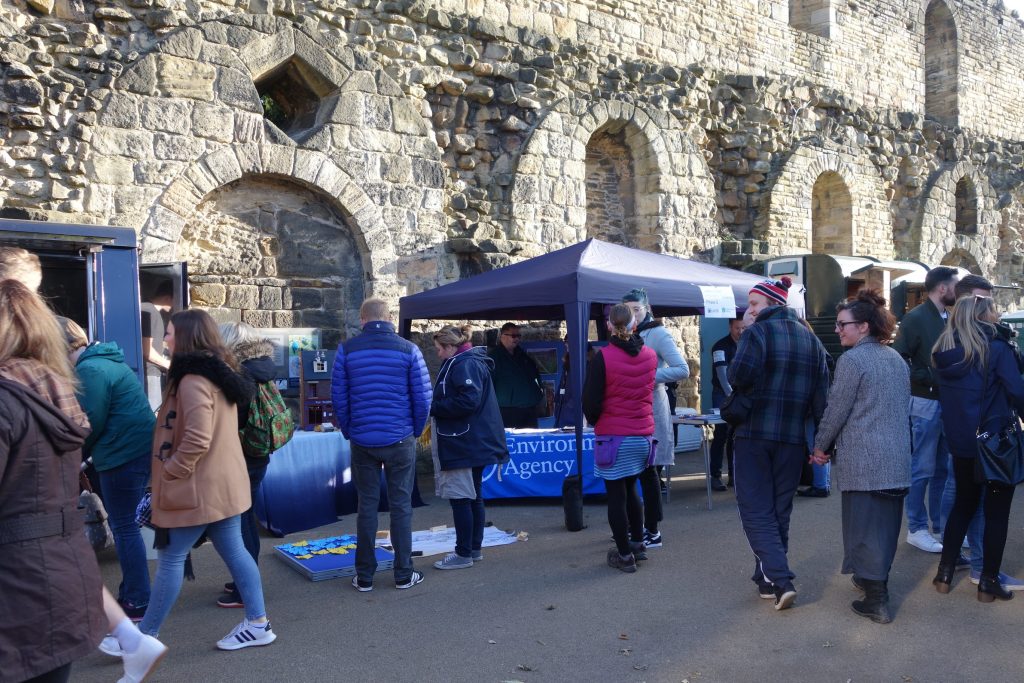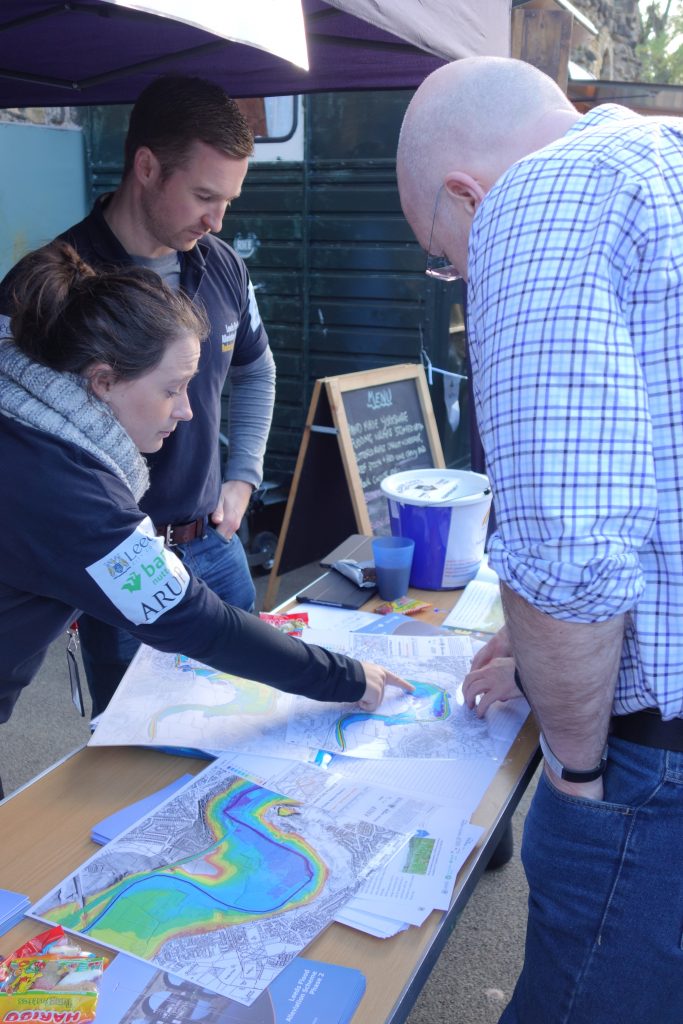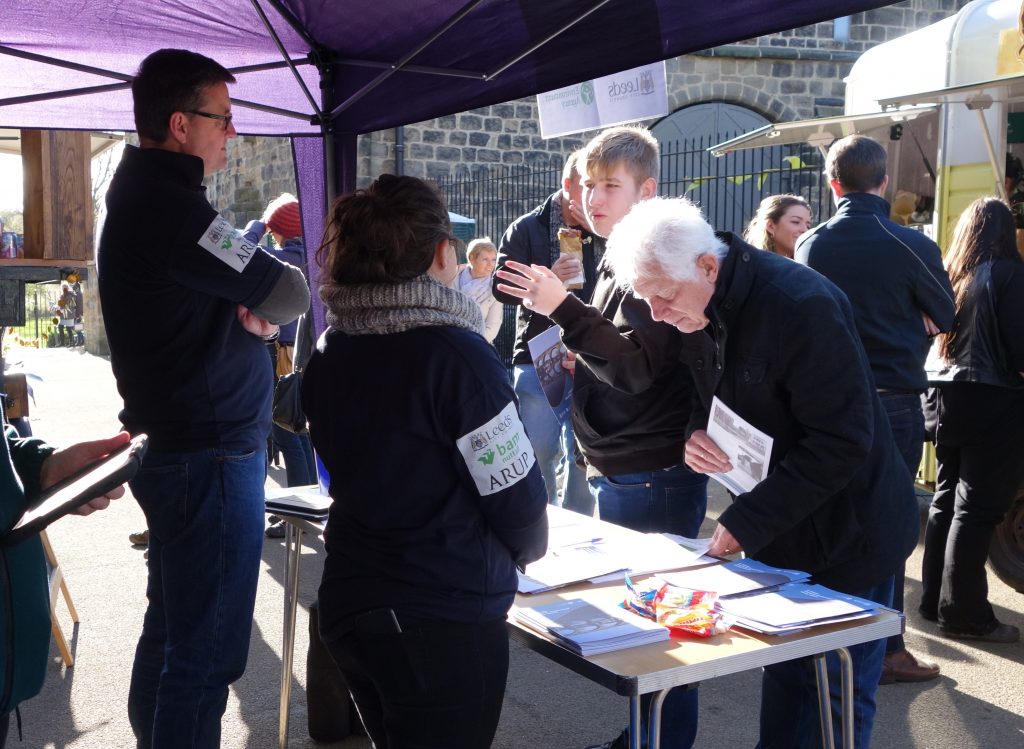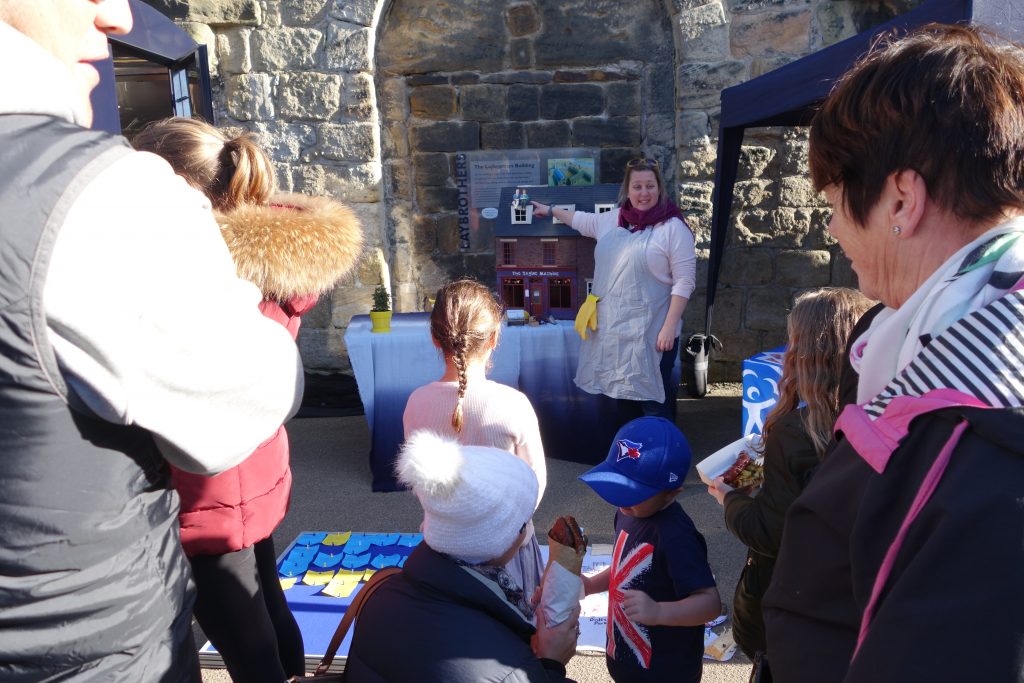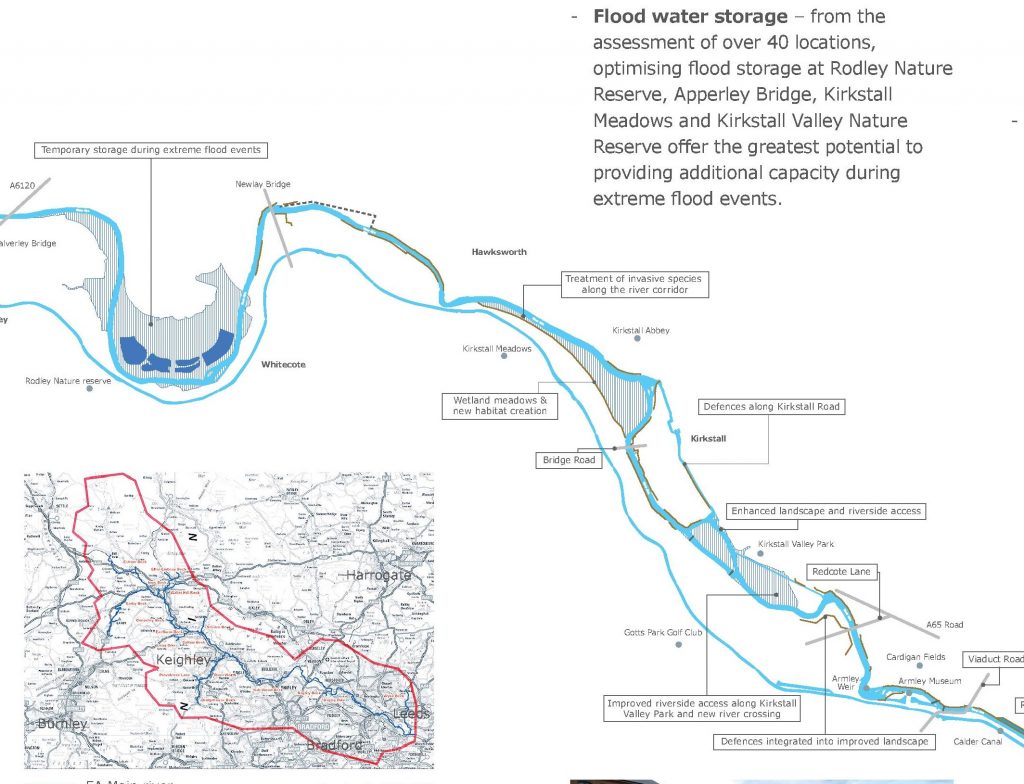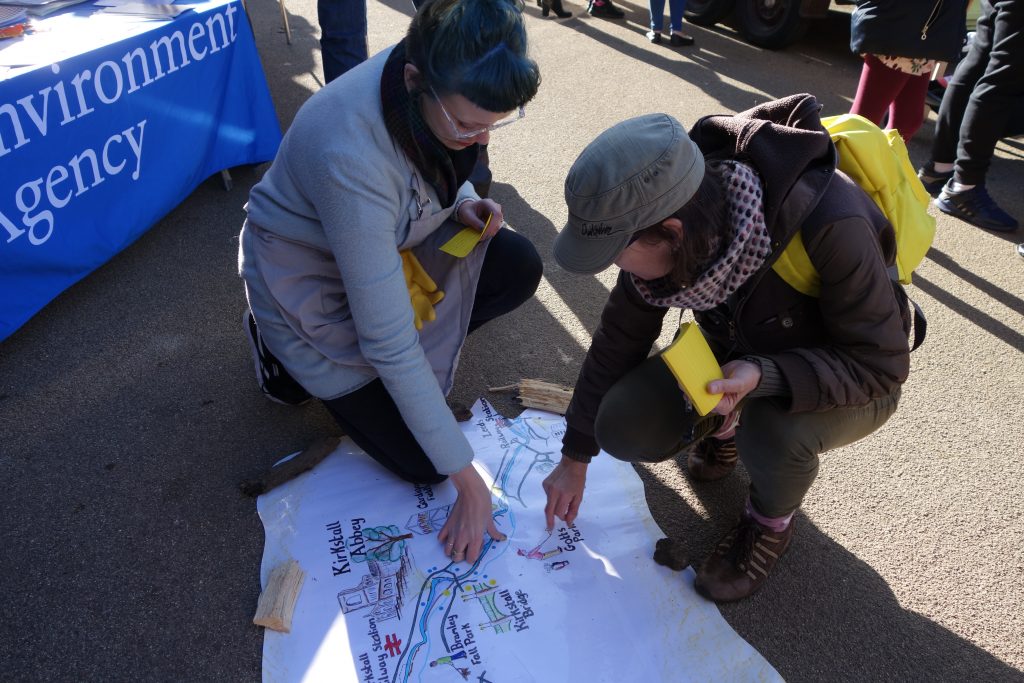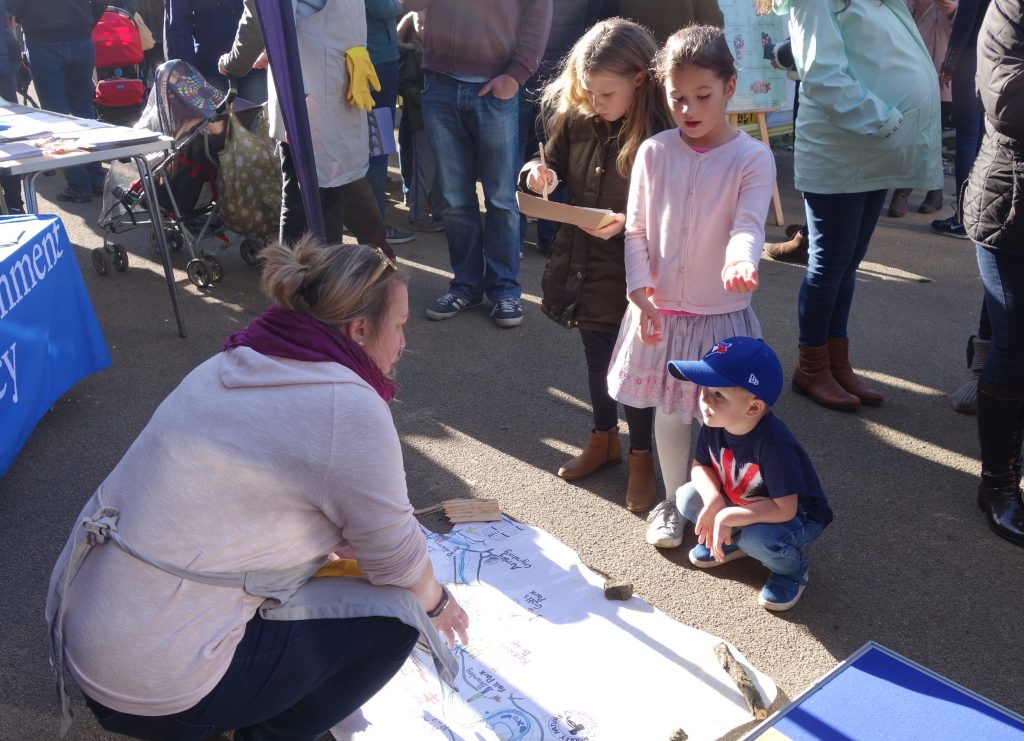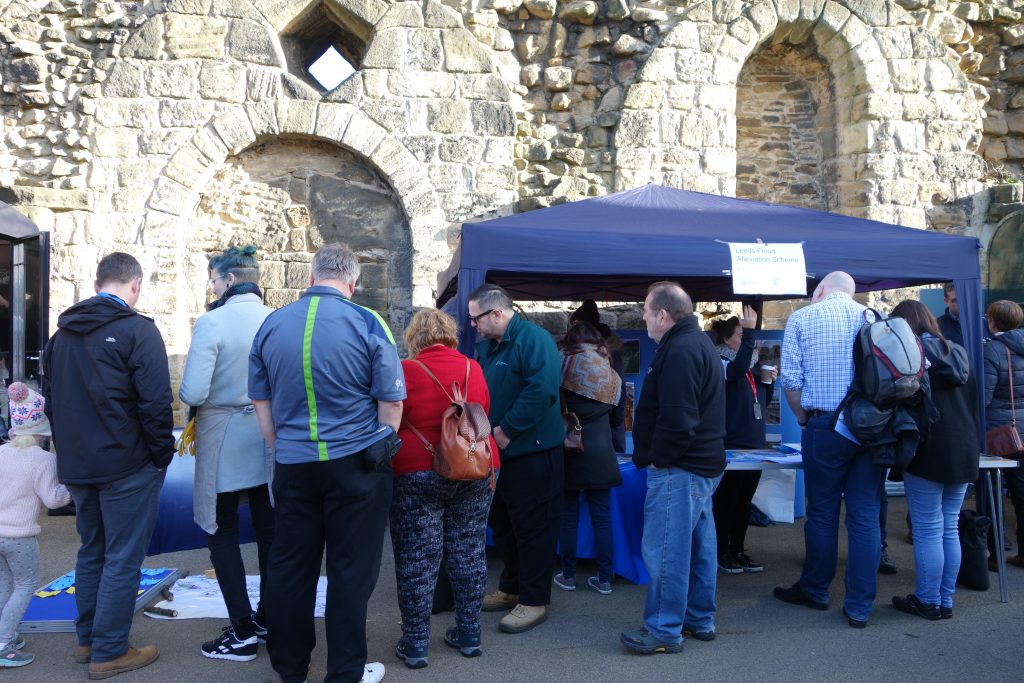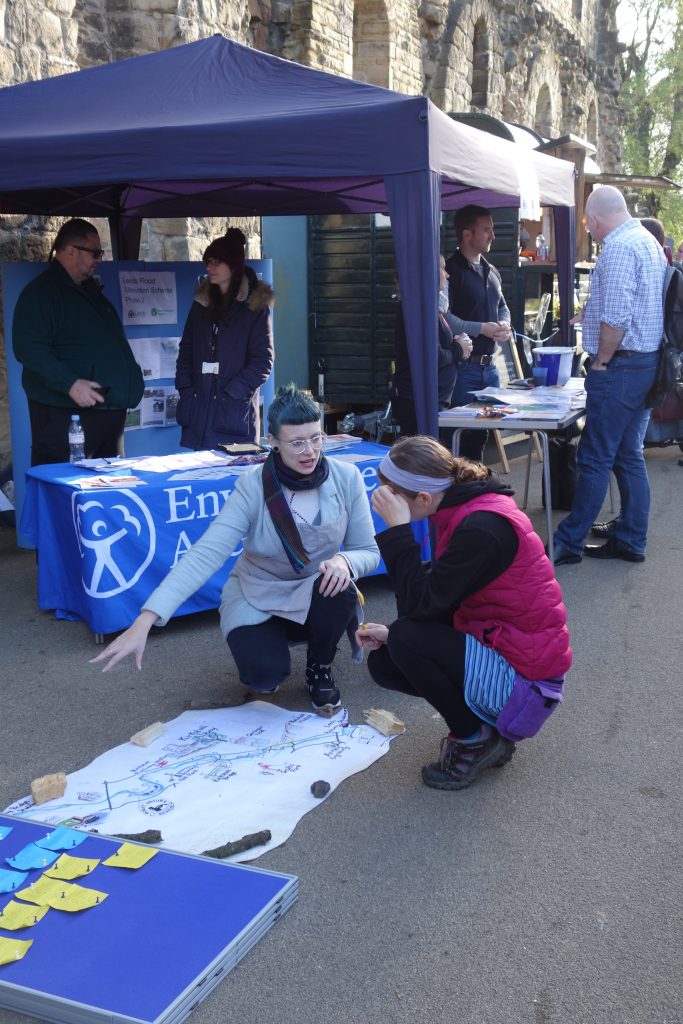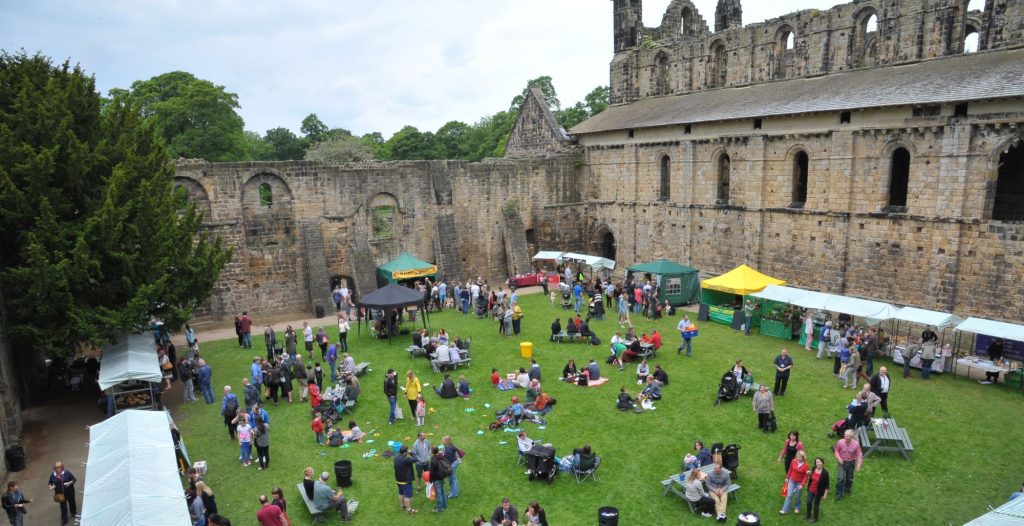 The ruins of Kirkstall Abbey, Leeds — built on the flood plain of the River Aire around 850 years ago. A regular event here now is the Kirkstall Abbey Market, pictured above. The market on Sunday 29 October 2017 featured an unusual contribution in the form of a stall run by the Environment Agency (EA)…
The ruins of Kirkstall Abbey, Leeds — built on the flood plain of the River Aire around 850 years ago. A regular event here now is the Kirkstall Abbey Market, pictured above. The market on Sunday 29 October 2017 featured an unusual contribution in the form of a stall run by the Environment Agency (EA)…
This was the last of a series of six events during October — in Kirkstall, Horsforth, Rodley and Apperley Bridge — where staff from the EA and other partners in the Leeds Flood Alleviation Scheme (FAS) were present to share with the public some outline plans for FAS2 — the second stage of the scheme which will work to improve flood defences east of the city centre and upstream as far as the city’s border with Bradford.
Here are two members of the FAS team explaining some of the proposals for new flood storage areas along the river. The full consultation document can be downloaded here.
The usual practice for “public consultation” events like this is to set up a covered stall (in case of rain), and position yourself behind tables with maps and leaflets. When people ask what you’re there for, you then engage them in conversation about the plans, and seek their thoughts and feedback (whether informal and verbal, or via written response to the consultation document).
For the FAS2 consultations, however, Multi-Story Water had been invited to provide a complementary component rooted in participatory arts practices. For us, a big part of this was making sure we came out from behind the table and tried to engage passers-by more pro-actively. Below, on the left, is Alice Boulton-Breeze — in apron and Marigolds (symbolising the flood clean-up after Boxing Day 2015) — discussing the document with members of the public.
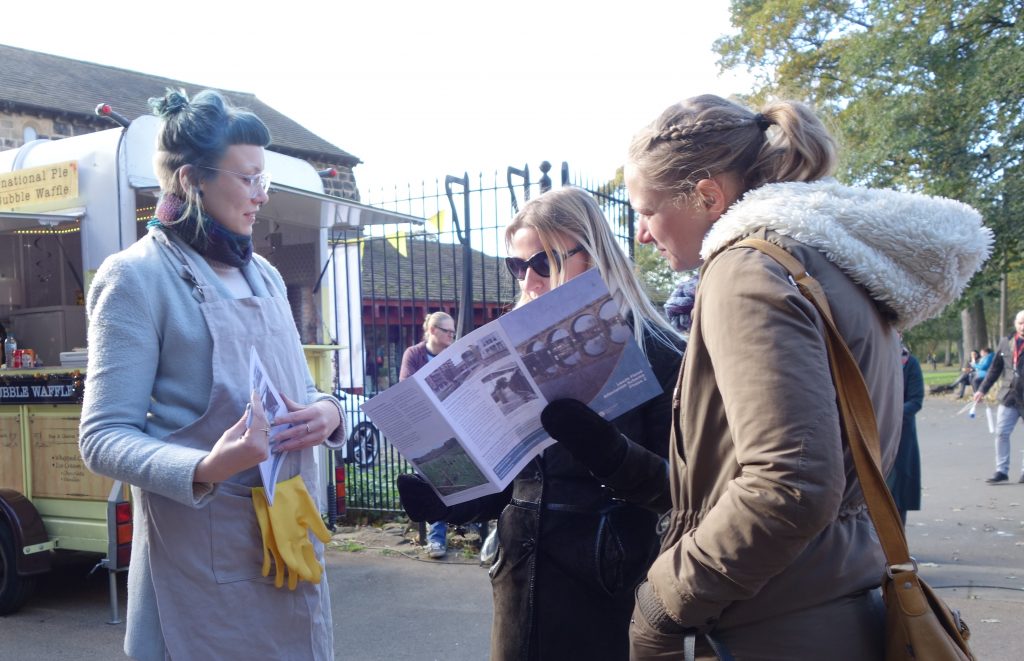 We had been asked to contribute to the consultation following the success of Weir Science, a performance event we devised for this year’s Leeds Waterfront Festival that highlighted parts of the now-completed FAS1. A consultation is not a festival, though (and the Deli Market context was the nearest we came to “festive” in October, after other events in libraries, pub car parks, etc.), and there was no finished installation (or even a definite plan for one) to “demonstrate”. So we adopted a less “theatrical” approach here, opting instead for improvised conversations around visual elements.
We had been asked to contribute to the consultation following the success of Weir Science, a performance event we devised for this year’s Leeds Waterfront Festival that highlighted parts of the now-completed FAS1. A consultation is not a festival, though (and the Deli Market context was the nearest we came to “festive” in October, after other events in libraries, pub car parks, etc.), and there was no finished installation (or even a definite plan for one) to “demonstrate”. So we adopted a less “theatrical” approach here, opting instead for improvised conversations around visual elements.
Here is Jaye Kearney (who worked in partnership with Alice at most of these October events: Phil Marken also stood in on a couple of occasions) pointing out the figures on the roof of our flooded doll’s house (a prop redeployed from 2016’s After the Flood).
The doll’s house, which illustrates one (fictitious) Kirkstall family’s struggles following the Boxing Day flood of 2015 was used as a way of encouraging passers-by to share their own memories of those events, and to reflect on the need for alleviation measures. Other visual elements we used included the small tree on the left of the table (for conversations about sustainable drainage and natural flood management: as in this scene from After the Flood) and a collection of “lottery balls” (used to explain flood probability statistics: as in this scene from Weir Science). But these were supporting elements used to engage those who were curious to talk longer: by far the most important and most-used element of our presentation was this hand-drawn map…
Jon Dorsett’s appealingly drawn map, which ties familiar landmarks to their (perhaps less familiar) places along the River Aire east of the city centre, had become slightly dog-eared by the time of this last consultation event at Kirkstall Abbey (not least after being rained on a lot in Rodley: we had to cut off the soggy corners…). But in a way, the ‘old treasure map’ feel that it acquired — combined with the “flood debris” used to hold it down — added to its deliberately informal, “home made” feel. This was in conscious contrast to the more “official” map appearing in the consultation document…
In hindsight, we should perhaps have made the map bigger. It was made to fit onto one panel of these blue stand-up boards, used here to gather written feedback on the plans.
But even so, the map attracted a lot of attention. And the decision to bring it down off the wall (or standing panel) onto the floor meant that passers-by often found themselves standing next to it pretty much by accident, and then crouched down for a closer look.
It might seem counter-intuitive, but we found that the physical act of squatting or crouching seemed to make people more relaxed and engaged than they might have been standing up looking at a board.
And once drawn into a conversation, if people had more technical questions that Alice or Jaye couldn’t answer (although they had got pretty well clued up in prep), then members of the FAS team could be invited over from behind their tables to chat…
Here’s Andy Judson, the FAS project director for engineering contractors BAM Nuttall, who also found himself crouching down to explain a point of detail from our map…
 As we had hoped, the various components of the MSW presentation also succeeded in drawing in people — including children — who might not have approached the more formal-looking Environment Agency stall…
As we had hoped, the various components of the MSW presentation also succeeded in drawing in people — including children — who might not have approached the more formal-looking Environment Agency stall…
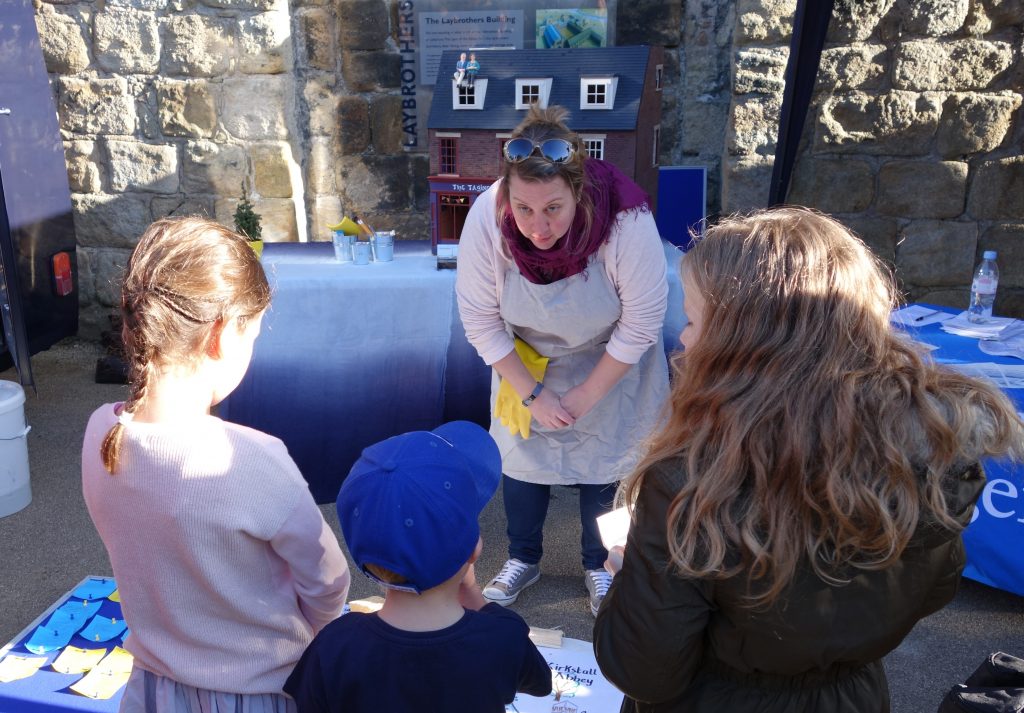 Jaye got into a particularly animated conversation with this group of youngsters, who had their own memories of the flood and their own ideas about the map…
Jaye got into a particularly animated conversation with this group of youngsters, who had their own memories of the flood and their own ideas about the map…
Although Alice’s conversation with the gentleman below seems to have been of less interest to his daughter…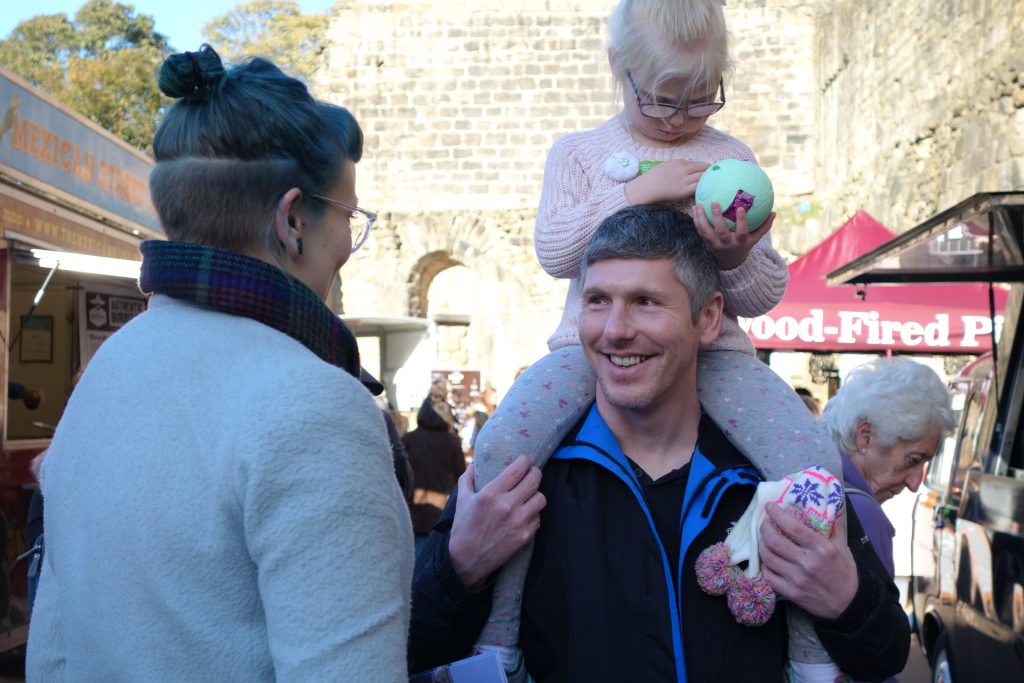
As may be apparent from some of these pictures, Alice and Jaye are both experienced performers who are particularly adept at this kind of participatory arts practice: in short, they are good at developing animated conversations with complete strangers! (a skill that should not be under-estimated…)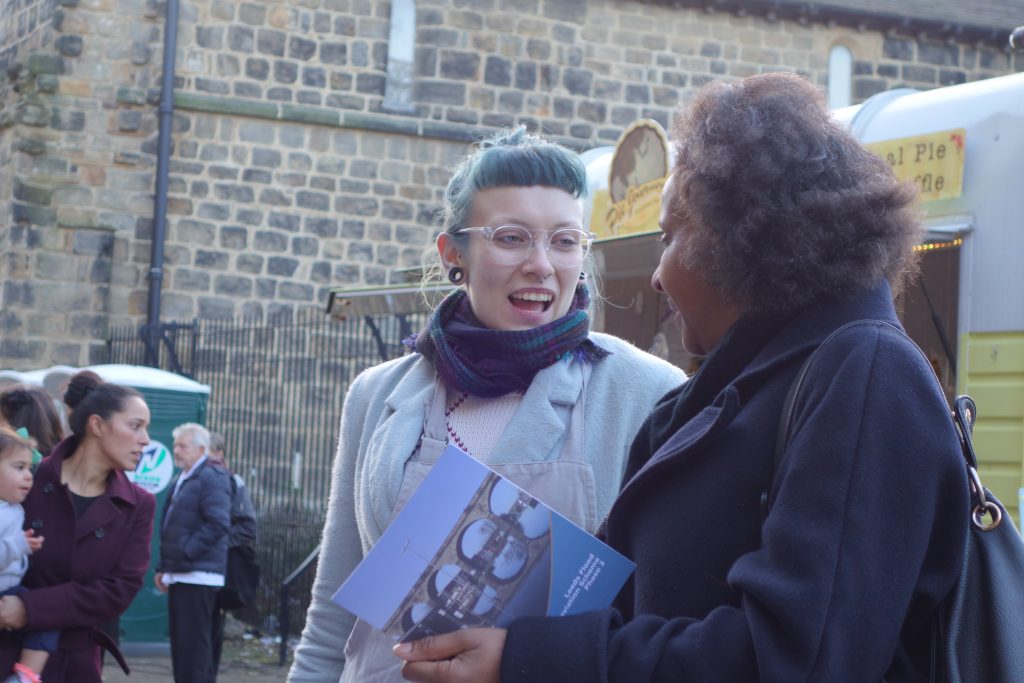 Jaye and Alice both greatly enjoyed their work on the FAS2 consultations, despite the sometimes challenging nature of conversations dealing with flood vulnerability. We feel that their work (and that of Simon Brewis and Ellie Harrison, on the planning and design side) made a significant contribution to this process, and nicely complemented the more technical FAS presentation. As is clear from the image below, the public were drawn in to both of these next-door components…
Jaye and Alice both greatly enjoyed their work on the FAS2 consultations, despite the sometimes challenging nature of conversations dealing with flood vulnerability. We feel that their work (and that of Simon Brewis and Ellie Harrison, on the planning and design side) made a significant contribution to this process, and nicely complemented the more technical FAS presentation. As is clear from the image below, the public were drawn in to both of these next-door components…
A big thankyou to Nicola McHale, at the Environment Agency, for commissioning us to be involved in these consultations. Thanks also to Rosa Foster (EA) and Andy Judson (BAM) for their continuing, enthusiastic support for Multi-Story Water.
MSW contributions conceived by Steve Bottoms and developed by:
Presenters: Jaye Kearney, Alice Boulton-Breeze, Phil Marken
Director: Simon Brewis Designer: Ellie Harrison
Thanks to you all!

